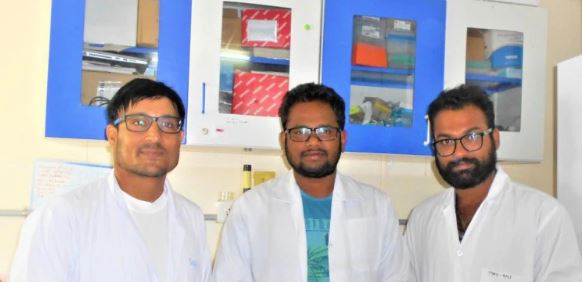Hyderabad: Researchers at the IIT-Hyderabad have derived collagen, a biomaterial that is extensively used in tissue engineering, from discarded skin of eel (a snake like fish) and shown tissue scaffolds built using it allow growth and proliferation of stem cells.
The practical applications of this research can lead to utilising eel fish skin-derived collagen as an alternative to animal derived collagen, which are expensive and associated with pathological diseases, a release from the Indian Institute of Technology-Hyderabad said on Monday.
Collagen is a protein found especially in the joints of humans and animals.
The research was funded by the Central government’s Department of Science and Technology-Science and Engineering Research Board(DST-SERB)through the National Postdoctoral Fellowship Scheme (N-PDF).
It was led by Mano Govindharaj, Young Scientist Fellow andSubha Narayan Rath, Associate Professor, Department of Biomedical Engineering, IIT Hyderabad and included Research Scholar Uday Kiran Roopavath, the release said.
The teams research has been published recently in the reputed peer-reviewed Journal of Cleaner Production, it said.
Our teams finding is a valuable asset in the area of blue biotechnology. The colour blue in biotechnology is assigned to the development of technology on the basis of aquaculture, coastal and marine biology, Govindharaj said.
Our research group at IIT Hyderabad uses a common marine waste product for producing collagen, a biomaterial that is extensively used in tissue engineering, he said.
Low immunogenicity, porous structure, good permeability, bio-compatibility and biodegradability make collagen scaffolds useful in tissue engineering applications, the release said.
Collagen is usually extracted from bovine skin and tendons, porcine skin and rat tail. But, such sources are associated with several problems, including spread of diseases like the mad-cow disease and religious constraints of using certain animals.
Extraction of collagen from non-mammalian sources was therefore attractive, it said.
Talking about the advantages gained from the research, Subha Narayan Rath said they have explored the valorisation of commoditised discarded marine Eel skin to develop value added collagen-based blue bio-materials.
The advantages of this extraction process are two fold.
Not only does it serve to provide a sustainable and safe source for collagen but also helps in waste management, Rath said.
Eel skin and fish skin wastes are commonly discarded in coastal areas, or even disposed of in the sea, which leads to a cascade of events due to breakdown of organic matter and reduction of oxygen levels in sea water, Rath said.
The research team derived collagen from eel skin by treating it with acetic acid, common salt and pepsin. It then combined the collagen with alginate hydrogel and used a 3D printing process to obtain scaffolds, the release said.
When the scaffolds were tested for stem cell growth and proliferation, the researchers found that the 3D printed collagen scaffolds allowed extensive growth of stem cells, thus making eel-skin derived collagen a promising material for tissue engineering applications, it added. (PTI)





